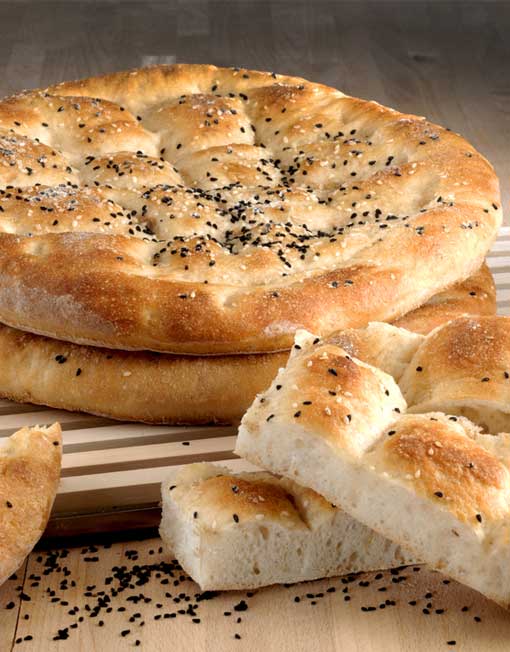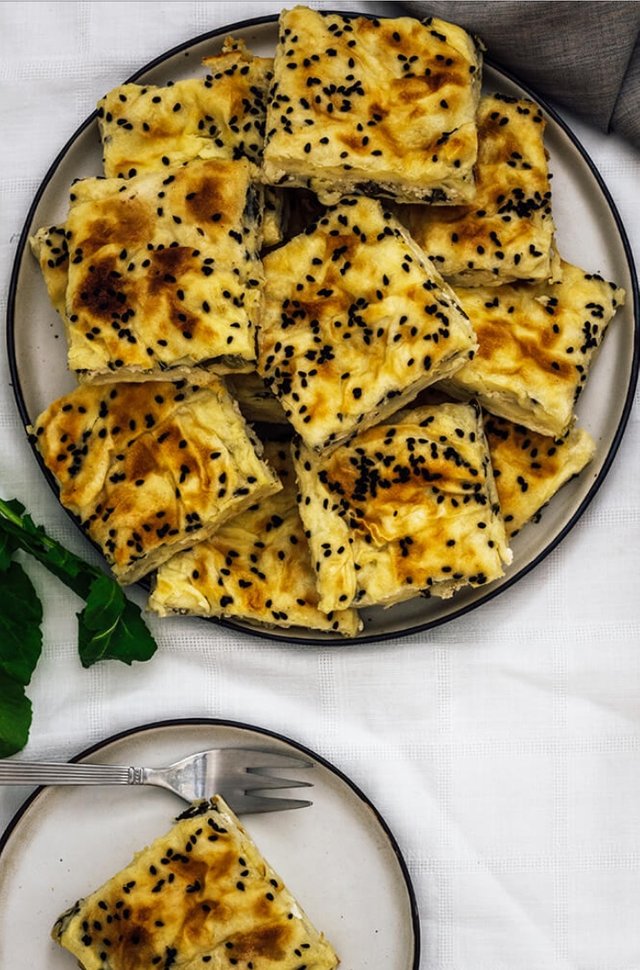Bread to Borek- The untold story of turkish food
Grains: Bread to Börek

Turkish Bread-Treditional Pride
The foundation of Turkish food is, if anything, the dough made of wheat flour. Besides "ekmek" - the ordinary white bread, "pide" - flat bread, "simit" - sesame seed rings, "manti" - dumplings, a whole family of food made up thin sheets of pastry called "börek" falls into this category.
The bakers of the Ottoman period believed that Adam, the Patron Saint of Bakers, learned how to make bread from the Archangel Gabriel, after his expulsion from the Garden of Eden. Obviously, the secret is still held dearly by the present day Turkish bakers; no other bread tastes as good as the even the everyday Turkish bread. One realizes the wonderful luxury of the Turkish bread upon leaving the country. This blessed food is enjoyed in large quantities and is respected by all, rich and poor, simple and sophisticated. Every neighbourhood has a bread-bakery that produces the golden crisp loaves twice a day, morning and afternoon, filling the streets with their irresistible and wholesome aroma. People pick up a few loaves on their way home from work, and end up eating the crisp ends by the time they get there. After a hard day's work, holding the warm loaf is the best reward, convincing one that all is well.
Ekmek, pide and simit are meant to be eaten the same day they are baked, and they usually are. The leftover ekmek goes into a variety of dishes, becomes chicken feed, or is mixed with milk for the neighbourhood cats.
Manti, dumplings of dough filled with a special met mix, are eaten with generous servings of garlic yogurt and a dash of melted butter with paprika. This is a meal in itself as a Sunday lunch affair for the whole family, to be followed by an afternoon nap.

Turkish Börek
Börek is a special-occasion food which requires great skill and patience, unless you have thin sheets of dough already rolled out from your corner grocery store. Anyone who can accomplish this delicate task using the rolling pin , becomes the most sought-out person in their circle of family and friends. The sheets are then layered or folded into various shapes before being filled with cheese or meat mixes and baked or fried. Every household enjoys at least five different varieties of börek as a regular part of its menu.
Next to bread, "pilav" is another staple in the Turkish kitchen. The most common versions are the cracked-wheat pilaf and the rice pilaf. A good cracked-wheat pilaf made with whole onions, sliced tomatoes, green peppers sautéed in butter, and boiled in beef stock is a meal itself. Many versions of the rice pilaf accompany vegetable and meat dishes. The distinguishing feature of the Turkish pilaf is its soft buttery morsels of rice which readily roll out from your spoon, rather than sticking together in a mushy clumps.
Hi! Your post has been selected by @NanoCheeZe to be upvoted by @XTDevelopment ... Don't forget to check us out - NanoCheeZe.com